
Ladakh is a region administered by India as a union territory and constitutes an eastern portion of the larger Kashmir region that has been the subject of a dispute between India and Pakistan since 1947 and India and China since 1959. Ladakh is bordered by the Tibet Autonomous Region to the east, the Indian state of Himachal Pradesh to the south, both the Indian-administered union territory of Jammu and Kashmir and the Pakistan-administered Gilgit-Baltistan to the west, and the southwest corner of Xinjiang across the Karakoram Pass in the far north. It extends from the Siachen Glacier in the Karakoram range to the north to the main Great Himalayas to the south. The eastern end, consisting of the uninhabited Aksai Chin plains, is claimed by the Indian Government as part of Ladakh, and has been under Chinese control since 1962.

Kargil district is a district in Indian-administered Ladakh in the disputed Kashmir-region. It is one of the two districts comprising the Indian-administered union territory of Ladakh. The district headquarters are in the city of Kargil. The district is bounded by the Indian-administered union territory of Jammu and Kashmir to the west, the Pakistani-administered administrative territory of Gilgit–Baltistan to the north, Ladakh's Leh district to the east, and the Indian state of Himachal Pradesh to the south. Encompassing three historical regions known as Purig, Dras and Zanskar, the district lies to the northeast of the Great Himalayas and encompasses the majority of the Zanskar Range. Its population inhabits the river valleys of the Dras, Suru, Wakha Rong, and Zanskar.

Music of Jammu and Kashmir reflects a rich musical heritage and cultural legacy of the Indian-administered union territory of Jammu and Kashmir. Two different regions of Jammu and Kashmir consists the Jammu region and Kashmir Valley. Music of Kashmir Valley has influences of Central Asian music while music from Jammu region is similar to that of other regions of North India.

Dogri is an Indo-Aryan language primarily spoken in the Jammu region of Jammu and Kashmir, India, with smaller groups of speakers in adjoining regions of western Himachal Pradesh, northern Punjab, and north-eastern Pakistani Punjab. It is the ethnic language of the Dogras, and was spoken in the historical region of Greater Duggar. Currently in Districts : Kathua, Jammu, Samba, Udhampur, and Reasi, These district residents also speak Kashmiri, Hindi, Urdu and Punjabi. Dogri is a member of the Western Pahari group of languages. Unusually for an Indo-European language, Dogri is tonal, a trait it shares with other Western Pahari languages and Punjabi. It has several varieties, all with greater than 80% lexical similarity.
The Dogras or Dogra people, are an Indo-Aryan ethno-linguistic group living primarily in the Indian union territory of Jammu and Kashmir and neighbouring Pakistan, consisting of the Dogri language speakers. They live predominantly in the Jammu region of Jammu and Kashmir, and in adjoining areas of Punjab and Himachal Pradesh. Some also live in northeastern Pakistan. Their historical homeland is known as Duggar.

Kargil or Kargyil is a city in Indian-administered Ladakh in the Kashmir region. It is the joint capital of Ladakh, an Indian-administered union territory. It is also the headquarters of the Kargil district. It is the second-largest city in Ladakh after Leh. Kargil is located 204 kilometres (127 mi) east of Srinagar in Jammu and Kashmir, and 234 kilometres (145 mi) to the west of Leh. It is on the bank of the Suru River near its confluence with the Wakha Rong river, the latter providing the most accessible route to Leh.
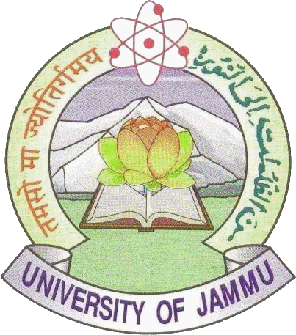
The University of Jammu informally known as Jammu University (JU), accredited as A+ grade by National Assessment and Accreditation Council (NAAC), was established in 1969 by an act of the state legislature which effectively split the Jammu and Kashmir University into the separate University of Jammu and University of Kashmir.
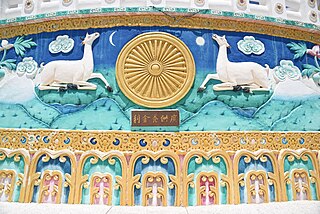
Ladakh Buddhist Association (LBA) is an organization in Ladakh, India concerned with interests of Buddhists in Ladakh. It was founded in 1933 by King Jigmet Dadul Namgyal, Kalon Tsewang Rigzin, lachumir Munshi Sonam Tsewang and Kalon Bankapa Morup Gyaltsan
The Jammu and Kashmir Academy of Art, Culture and Languages is a society registered with the government of Jammu and Kashmir as a cultural organization for the promotion of regional languages, arts, and culture in Jammu and Kashmir.
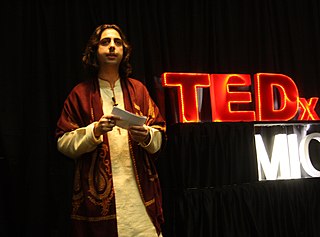
Abhay Rustum Sopori is an Indian Santoor player, music composer and conductor. He is the son of Santoor player Pandit Bhajan Sopori, known for his versatility, innovations and experimentation. Sopori has received awards in recognition of his contribution in the field of music, and is one of the youngest recipients of awards such as 'Bharat Shiromani Award' & 'Ustad Bismillah Khan Yuva Puraskar'. Abhay was invited to speak at the international conference TEDx.
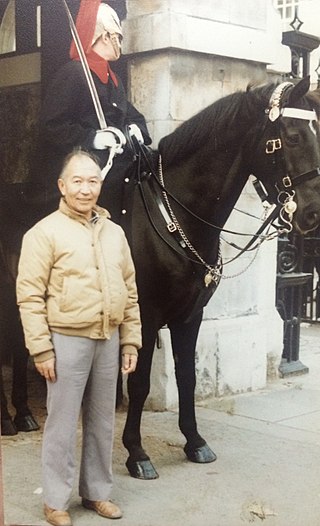
Tashi Rabgias Indian scholar and historian who belonged to the Union Territory of Ladakh. He was a scholar of Mahayana and Vajrayana Buddhism. He commanded great expertise over the Bhoti language. He has many books to his credit. He has a collection of more than 200 folk songs for which he was awarded a Robe of Honour by the Art Culture and Language Department, Govt of Jammu and Kashmir.
Balwant Thakur is an Indian theatre personality and scholar, known for bringing Dogri theatre to international notice. He was honoured by the Government of India, in 2013, by bestowing on him the Padma Shri, the fourth highest civilian award, for his contributions to the field of theatre.
Rajendra Tiku, is an Indian sculptor and art teacher known for his outdoor stone sculptures. He was honoured by the Government of India, in 2013, by bestowing on him the Padma Shri, the fourth highest civilian award, for his contributions to the field of art.

The following outline is provided as an overview of and topical guide to Jammu and Kashmir:
Prof. Champa Sharma is a noted Dogri author and poet known for her contributions to the promotion and preservation of Dogri language in Jammu and Kashmir as well as other Dogri speaking regions of Himachal Pradesh.
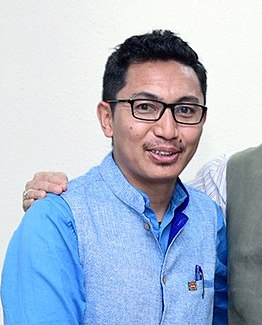
Jamyang Tsering Namgyal is an Indian politician and Member of Parliament from Ladakh, India's largest parliamentary seat geographically. Namgyal was elected, on 9 November 2018, to be the youngest and 8th Chief Executive Councillor (CEC) of Ladakh Autonomous Hill Development Council, Leh. He belongs to the Bharatiya Janata Party (BJP).
Sangeeta Gupta, a retired Chief Commissioner of Income Tax, is an Indian abstract artist, poet and filmmaker. She is the first woman who qualified Civil Services from her district in Uttar Pradesh, India. She is an officer of 1984 batch IRS. Her artistic journey so far consist of 35 solo exhibitions of paintings, 25 published books including Fourteen anthologies of poems in Hindi and six in English. From her collection of poems, 10 books are translated into German, Greek, Mandarin, English, Bangla, Dogri, Tamil and Urdu. She has also directed, scripted and shot 30 documentary films, 6 of which are in the collection of the US Library of Congress. Song of the Cosmos is her creative biography.

Prof. Baldev Singh Bali is an Indian classical musician and Professor emeritus at the Institute of Music and Fine Arts Jammu where he also served as the Dean of the college and Head of the Music Faculty.

The following outline is provided as an overview of and topical guide to Ladakh:

The culture of Ladakh refers to the traditional customs, belief systems, and political systems that are followed by Ladakhi people in India. The languages, religions, dance, music, architecture, food, and customs of the Ladakh region are similar to neighboring Tibet. Ladakhi is the traditional language of Ladakh. The popular dances in Ladakh include the khatok chenmo, cham, etc. The people of Ladakh also celebrate several festivals throughout the year, some of the most famous are Hemis Tsechu and Losar.














